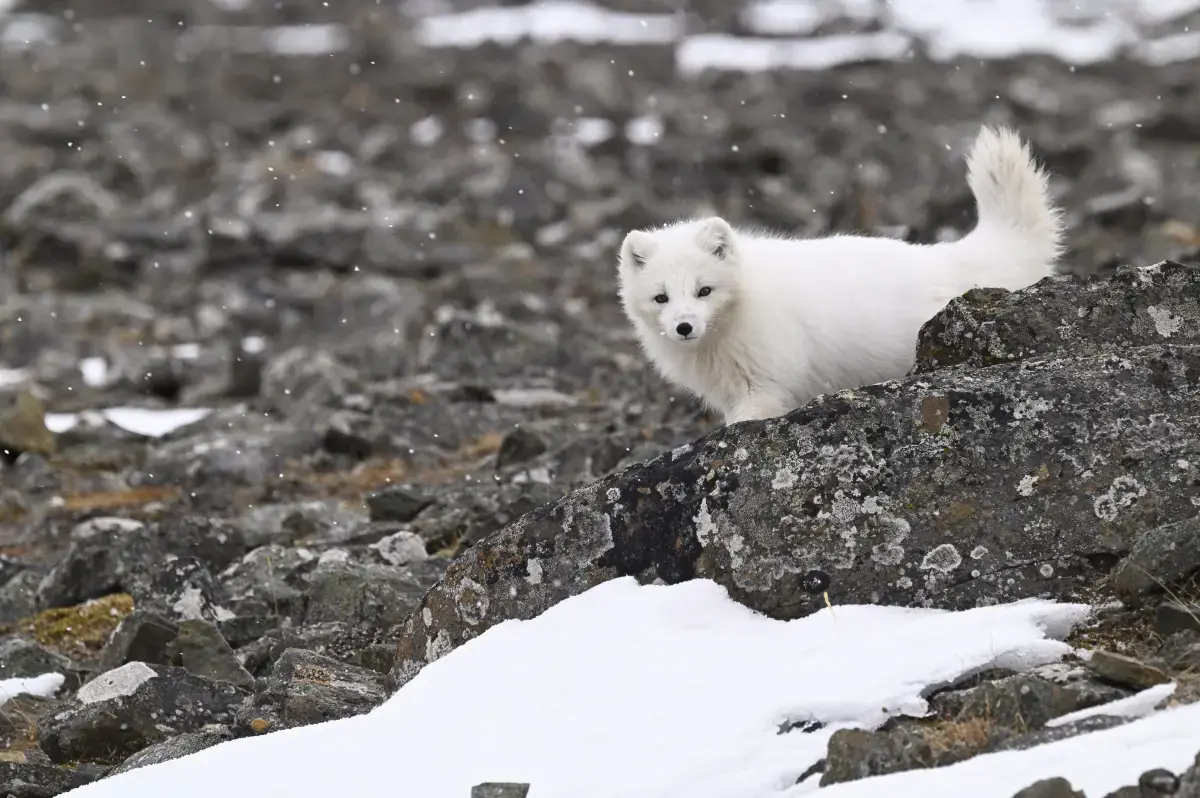The arctic foxes in Svalbard and mainland Norway are the same species. It is smaller than the red fox, which is not found in Svalbard. An arctic fox weighs about 3–4 kg and is about the size of a large cat. Some survive as long as 13–15 years, but most live only 3–4 years.
Arctic foxes can have either white or blue fur, and both colour morphs are found in Svalbard. The white morph is more common. They change fur from summer to winter. Their summer fur is short whereas the winter fur is thick and warm. The winter fur of white morphs is entirely white, while the summer fur is grey-brown on the fox’s back and thighs but yellow-white on its belly and sides. The fur of blue morph foxes is uniform in colour: dark brown to steely blue-grey in winter, and chocolate brown in summer.
Arctic foxes mate for life. They defend a territory surrounding a den they have excavated, in which the female gives birth to pups. In Svalbard, female foxes usually have 5–6 pups, born around 20 May. Both parents bring food to their pups and teach them hunting techniques so they can quickly start hunting on their own. The pups must be able to fend for themselves by the end of August. Svalbard has little food to offer once the migratory birds have left in October. Then the arctic fox must hunt Svalbard rock ptarmigan or scavenge for reindeer carcasses or the remains of a seal a polar bear has consumed. Arctic foxes are born hoarders and in winter they can find food they stashed away during summer and autumn. When light returns in spring, the migratory birds come back to Svalbard and the arctic fox can once again hunt for seabirds in the bird cliffs and geese on the tundra.
- 1/1
Gijsbert Breedveld

